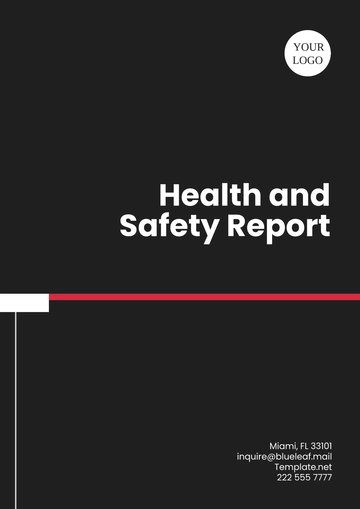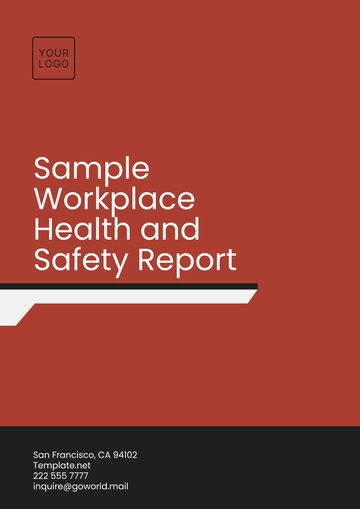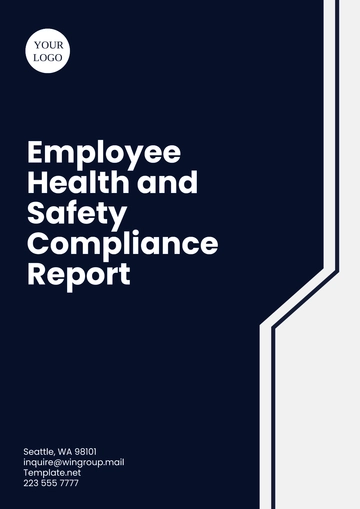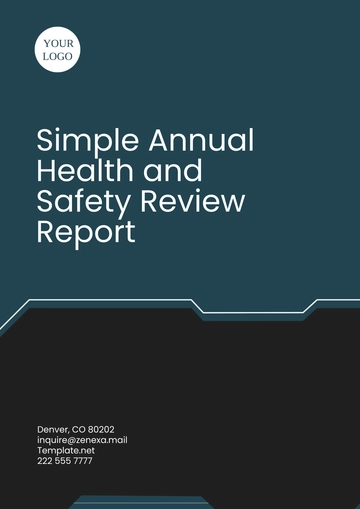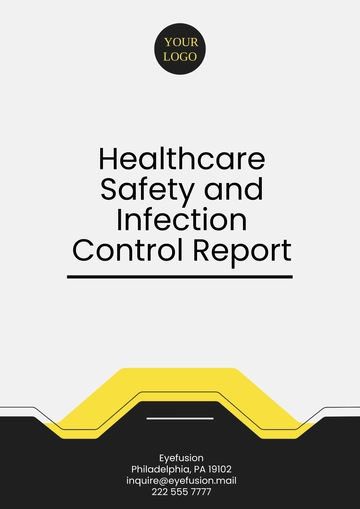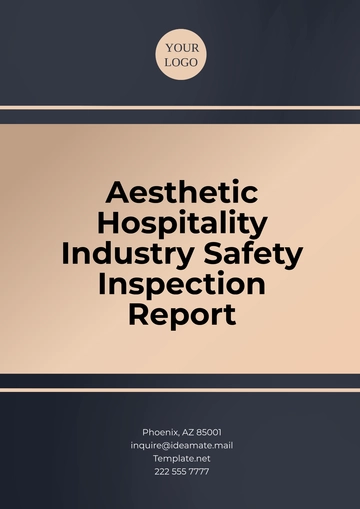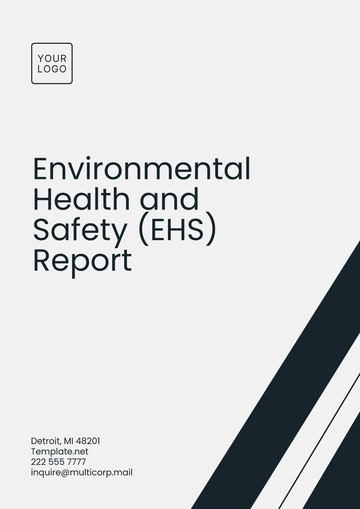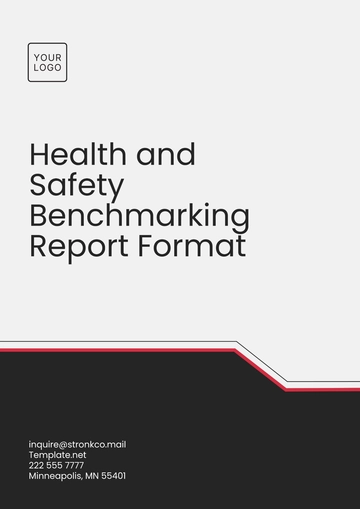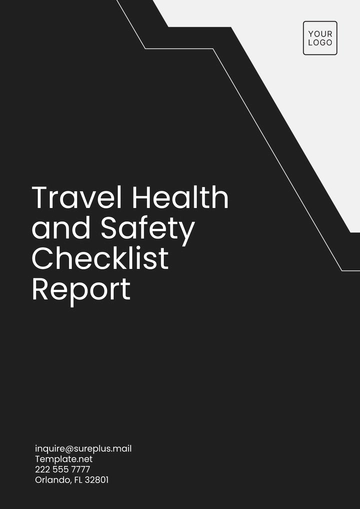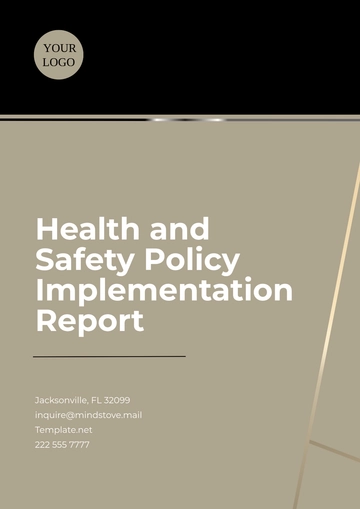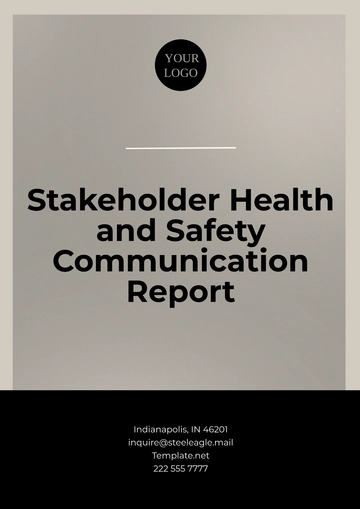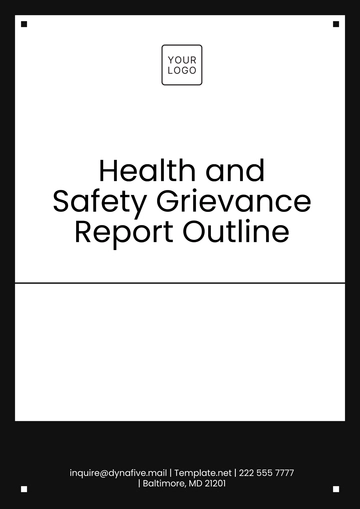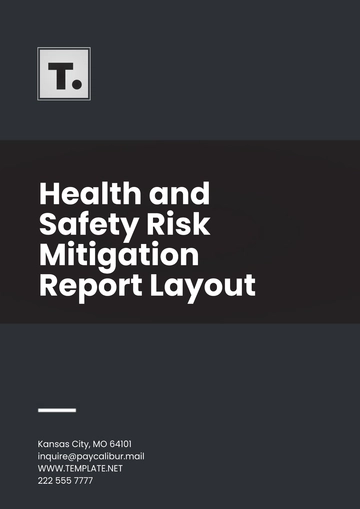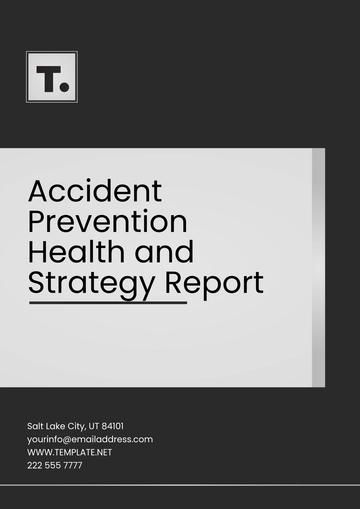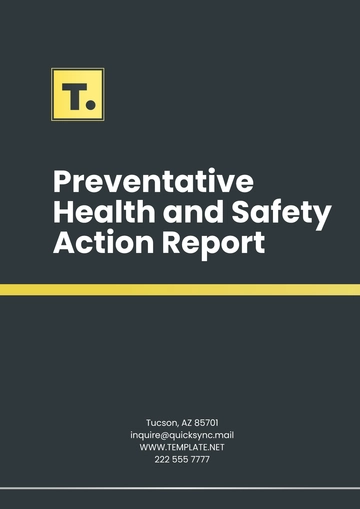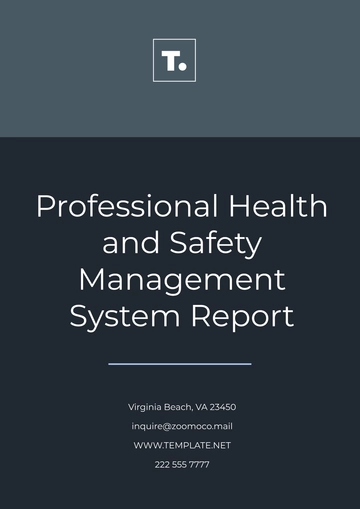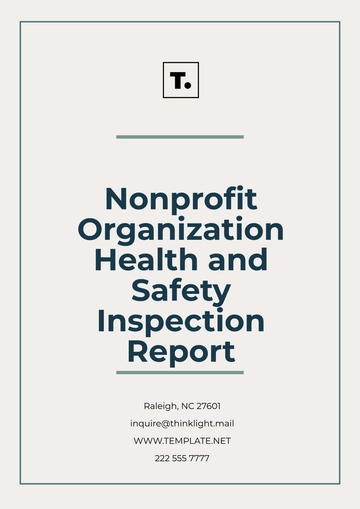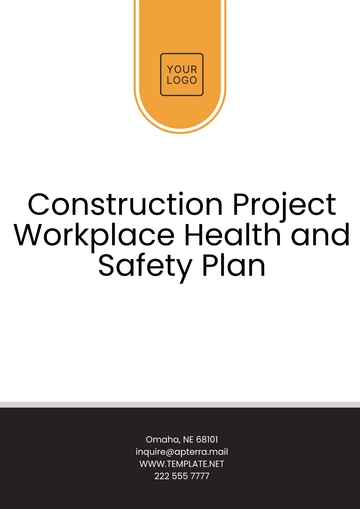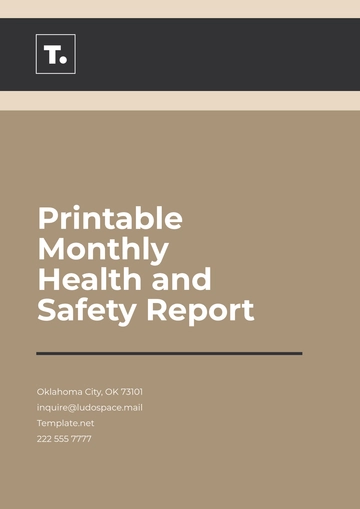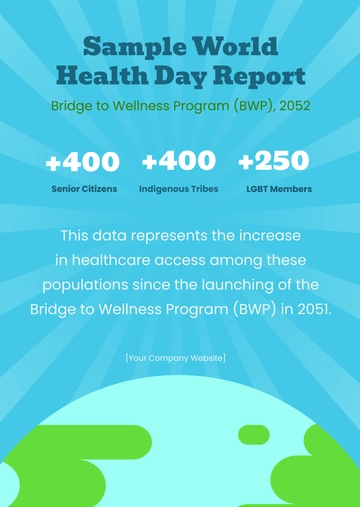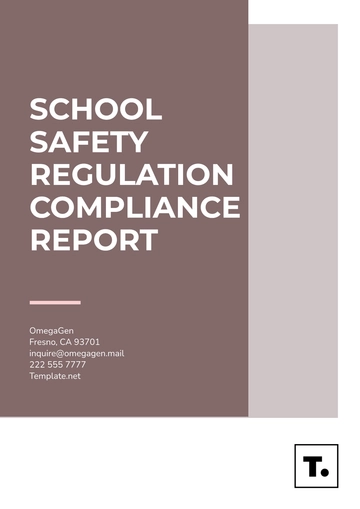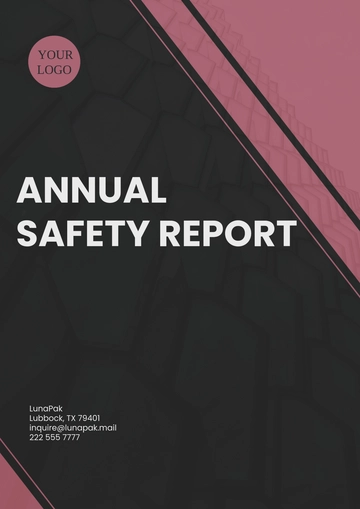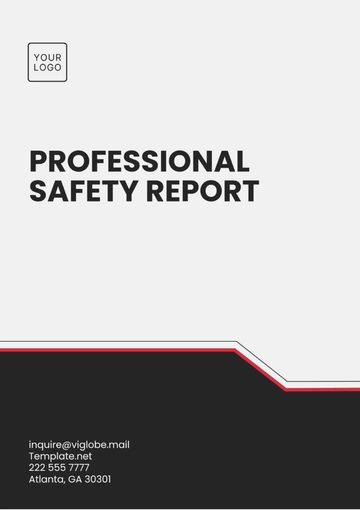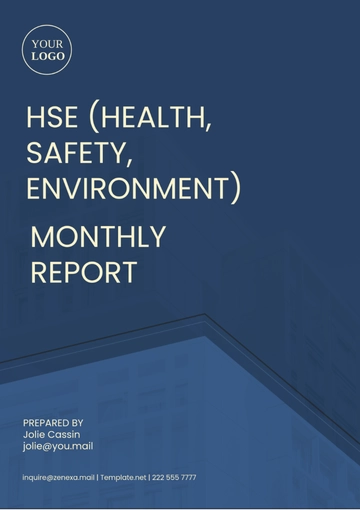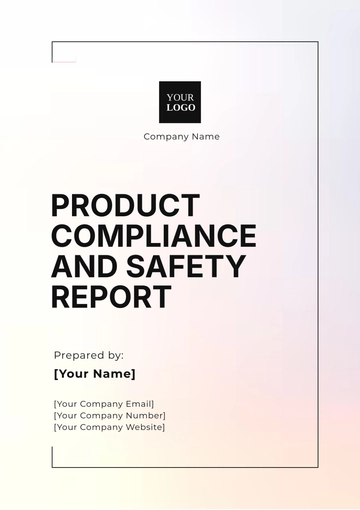Free Spa Safety Report
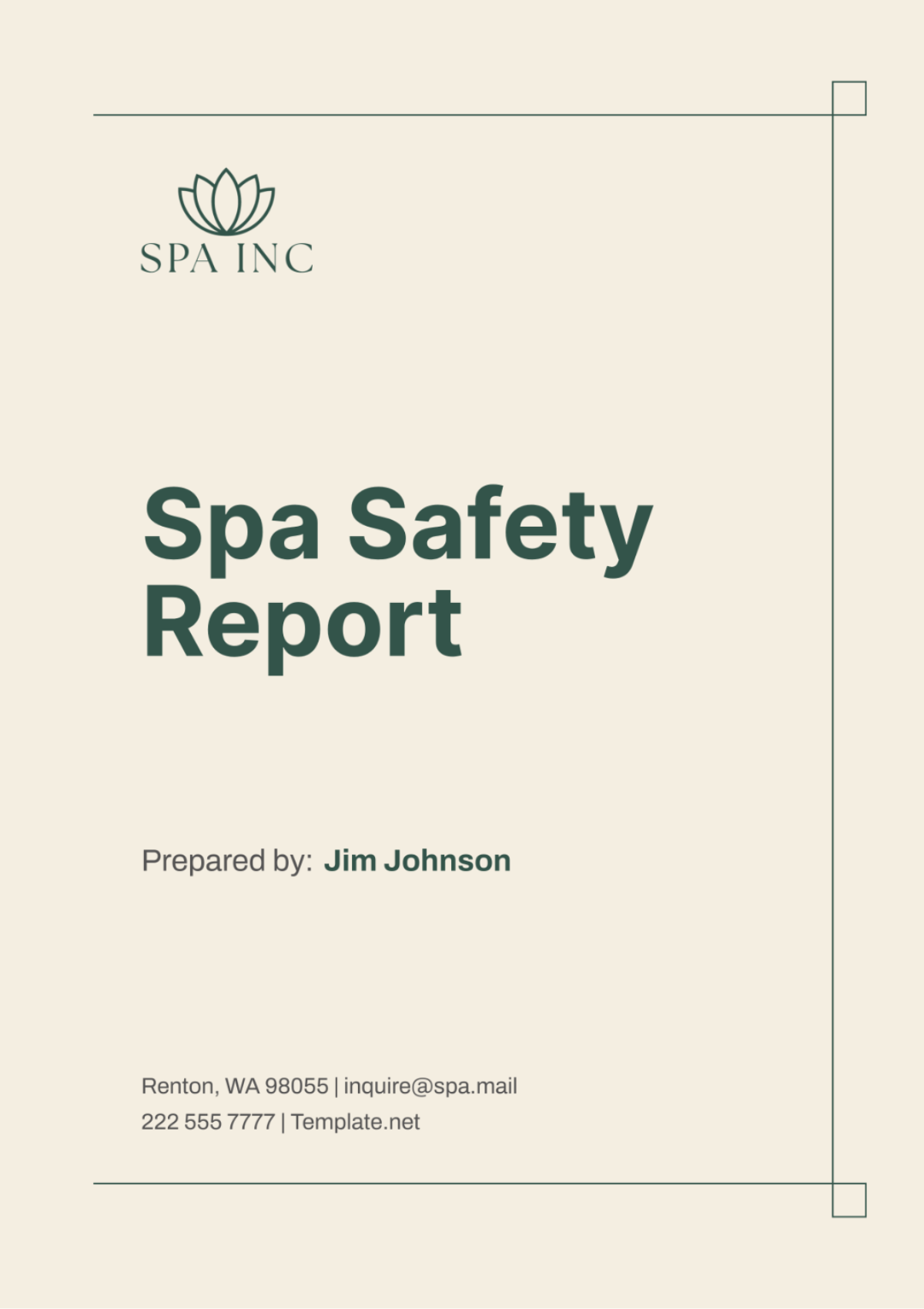
Executive Summary
This Spa Safety Report provides an in-depth analysis of the safety protocols, compliance measures, and incident management practices at [Your Company Name] Spa. The report spans the period from January 1, 2050, to November 30, 2050, and highlights key areas of strength, potential risks, and recommendations for improvement. Our primary goal is to ensure a safe and secure environment for both clients and staff, adhering to the highest standards of health and safety regulations.
1. Introduction
Safety is paramount in the spa industry, where clients expect a relaxing and secure environment. This report outlines the current safety measures at [Your Company Name] Spa, evaluates their effectiveness, and suggests enhancements. We aim to mitigate risks, prevent accidents, and promote a culture of safety awareness among our employees.
2. Objectives
The objectives of this Spa Safety Report are multifaceted and aim to create a comprehensive approach to maintaining and enhancing safety standards at [Your Company Name] Spa. This section outlines the specific goals that drive the evaluation and improvement of our safety protocols.
2.1 Evaluate Existing Safety Protocols and Their Effectiveness
The primary objective is to conduct a thorough evaluation of the current safety measures in place. This involves assessing the protocols' efficacy in preventing accidents, managing emergencies, and ensuring a safe environment for both clients and staff. By systematically reviewing these protocols, we can determine which practices are effective and identify any gaps or areas that require enhancement.
2.2 Identify Areas of Potential Risk and Non-Compliance
Another critical objective is to identify areas within our operations that pose potential risks. This includes scrutinizing all aspects of our spa services, from treatment procedures to equipment usage and client interactions. We aim to uncover any non-compliance with established health and safety regulations, thus mitigating any legal or operational risks.
2.3 Recommend Improvements to Enhance Safety and Compliance
Based on the findings from our evaluations and risk assessments, we will develop a set of recommendations aimed at improving our safety protocols. These recommendations will be tailored to address specific weaknesses or gaps identified during the assessment phase. Our goal is to implement these improvements systematically to enhance overall safety and ensure strict compliance with all relevant regulations.
2.4 Ensure Continuous Education and Training on Safety Measures for All Staff Members
Continuous education and training are vital components of our safety strategy. We are committed to providing ongoing training sessions that keep all staff members updated on the latest safety practices, emergency procedures, and health regulations. This objective focuses on establishing a culture of safety awareness and preparedness among our employees, ensuring they have the knowledge and skills needed to maintain a safe environment.
2.5 Maintain a High Standard of Health and Safety to Protect Clients and Staff
Ultimately, our overarching objective is to maintain and continuously improve the high standards of health and safety at [Your Company Name] Spa. This involves not only adhering to current regulations but also striving to exceed them where possible. By prioritizing the safety and well-being of both clients and staff, we aim to foster trust and confidence in our services, thereby enhancing our reputation and client satisfaction.
3. Safety Protocols and Compliance
The safety protocols at [Your Company Name] Spa are designed to create a secure and healthy environment for all. This section details the current safety measures in place and our compliance with health regulations.
3.1 Current Safety Measures
At [Your Company Name] Spa, we have implemented a range of safety measures to ensure the highest standards of health and safety are met. These measures include:
3.1.1 Regular Cleaning and Sanitation
Daily cleaning schedules are rigorously followed to maintain hygiene throughout the spa. Special attention is given to treatment rooms, restrooms, and common areas to prevent the spread of germs and infections. High-touch surfaces are sanitized multiple times a day.
3.1.2 Personal Protective Equipment (PPE)
To protect both staff and clients, PPE such as gloves, masks, and face shields are provided to all staff members. The use of PPE is mandatory during treatments and interactions with clients, ensuring a barrier against potential contaminants.
3.1.3 Client Screening
Clients undergo health screenings before entering the spa. This includes temperature checks and completion of health questionnaires to identify any symptoms or exposure to infectious diseases. This proactive measure helps in early detection and prevention of potential health risks.
3.1.4 Employee Health Monitoring
Regular health checks are conducted for employees, including symptom monitoring and periodic COVID-19 testing. This ensures that staff members are fit to work and do not pose a health risk to clients or colleagues.
3.1.5 Emergency Procedures
Clear guidelines and regular drills are established for handling emergencies such as fires, medical incidents, and evacuations. Staff are trained to respond swiftly and effectively to ensure the safety of all individuals on the premises.
3.2 Compliance with Health Regulations
[Your Company Name] Spa is committed to full compliance with local, state, and federal health regulations. Our adherence to these regulations is detailed below:
3.2.1 OSHA Standards
We comply with the Occupational Safety and Health Administration (OSHA) standards, which provide guidelines on maintaining a safe workplace. This includes proper use of PPE, workplace hygiene, and safety training.
3.2.2 Health Department Guidelines
State health department guidelines for sanitation, hygiene, and infection control are strictly followed. Regular inspections ensure that we meet and often exceed these standards, providing a safe environment for clients and staff.
3.2.3 Industry Best Practices
Implementation of best practices recommended by industry associations such as the International Spa Association (ISPA) ensures that our safety protocols are up-to-date and effective. These practices cover a wide range of safety aspects, from treatment procedures to client interactions.
4. Incident Reporting and Management
An efficient incident reporting and management system is crucial for maintaining safety standards and addressing any issues promptly. This section outlines the procedures for reporting, tracking, and analyzing incidents at [Your Company Name] Spa.
4.1 Incident Reporting System
We have established a comprehensive incident reporting system to ensure all safety-related incidents are documented accurately and addressed promptly.
4.1.1 Incident Report Forms
Standardized forms are used to report incidents, accidents, and near-misses. These forms capture detailed information about the incident, including time, location, individuals involved, and a description of what occurred.
4.1.2 Digital Reporting Platform
An online platform is available for real-time incident reporting and tracking. This platform allows for quick submission of reports and ensures that all incidents are logged and monitored efficiently.
4.1.3 Incident Review Committee
A dedicated committee is responsible for reviewing all reported incidents. This committee analyzes the root causes of incidents and recommends corrective actions to prevent recurrence.
4.2 Incident Statistics
The following table provides a summary of the incidents reported during the specified period:
Type of Incident | Number of Incidents | Details |
|---|---|---|
Slips, Trips, and Falls | 5 | Minor injuries, all resolved |
Equipment Malfunctions | 2 | No injuries, equipment repaired |
Health Emergencies | 3 | Prompt medical response, no fatalities |
Chemical Exposures | 1 | Mild skin irritation, treatment given |
4.3 Incident Analysis
An analysis of the reported incidents indicates that while most incidents were minor and managed effectively, there are areas for improvement:
Slips, Trips, and Falls: These incidents are common in high-traffic areas and wet surfaces. Additional anti-slip mats and clearer signage can help reduce these incidents.
Equipment Malfunctions: Regular maintenance and timely repairs of equipment are essential. Enhanced training on equipment use and checks can further minimize these incidents.
Health Emergencies: Prompt medical responses were effective, but continuous training in first aid and emergency procedures is necessary to maintain preparedness.
Chemical Exposures: Proper storage and handling of chemicals, along with appropriate PPE usage, can mitigate these risks. Regular reviews of safety protocols for chemical handling are recommended.
5. Risk Assessment and Mitigation
5.1 Risk Assessment
A comprehensive risk assessment was conducted at [Your Company Name] Spa to identify potential hazards in the spa environment. The assessment was thorough, involving a detailed examination of all areas within the spa, consultation with staff, and analysis of past incident reports. Key risks identified include:
Slips and Falls: One of the most common hazards in a spa environment is the risk of slips and falls due to wet floors, especially in treatment areas, restrooms, and near the pools or showers. These areas are prone to moisture, increasing the likelihood of accidents.
Chemical Hazards: Exposure to cleaning agents and spa products poses significant risks. Many of these products contain chemicals that can cause skin irritation, respiratory issues, or other health problems if not handled properly.
Equipment Safety: The use of electrical and mechanical spa equipment, such as massage chairs, saunas, and facial machines, presents safety risks. Malfunctions or improper use of this equipment can result in injuries to both clients and staff.
Health Risks: The close contact nature of spa treatments increases the risk of spreading infectious diseases. This includes not only common illnesses but also more serious infections that can be transmitted through skin contact or shared surfaces.
5.2 Mitigation Measures
To address the risks identified in the assessment, the following mitigation measures have been implemented at [Your Company Name] Spa:
Anti-Slip Flooring: Installation of anti-slip mats and specialized flooring in high-risk areas significantly reduces the chance of slips and falls. Regular checks are conducted to ensure these mats are in good condition and properly positioned.
Chemical Safety Training: Regular training sessions are conducted on the safe handling and storage of chemicals. Staff are educated on the importance of using protective equipment, understanding material safety data sheets (MSDS), and proper disposal methods.
Equipment Maintenance: Routine maintenance and inspection of all spa equipment are critical to ensuring safety. A schedule for regular checks is maintained, and any faulty equipment is promptly repaired or replaced. Staff are trained to recognize potential equipment issues and report them immediately.
Infection Control Protocols: Enhanced infection control measures include regular disinfection of surfaces and equipment, proper hand hygiene practices, and the use of personal protective equipment (PPE) such as gloves and masks. These protocols are strictly enforced to minimize the risk of disease transmission.
6. Employee Training and Education
6.1 Training Programs
[Your Company Name] Spa is committed to the continuous education and training of our staff to ensure they are well-versed in safety protocols. Our training programs are comprehensive and tailored to address the specific safety needs of the spa environment. Key training programs include:
Orientation Training: All new employees undergo a safety orientation upon hiring, which covers basic safety protocols, emergency procedures, and an introduction to the spa's specific safety policies. This ensures that every staff member starts their role with a solid understanding of their safety responsibilities.
Annual Safety Training: Mandatory annual training sessions are held to refresh and update all staff on health and safety practices. These sessions cover a broad range of topics, including first aid, CPR certification, fire safety, and the latest industry safety standards.
Specialized Training: Targeted training sessions focus on specific safety topics, such as chemical handling and equipment safety. These sessions are conducted bi-annually or as needed to address emerging risks or changes in safety regulations.
Training Program | Frequency | Participants | Trainer |
|---|---|---|---|
Safety Orientation | Upon Hiring | All New Employees | Safety Officer |
Annual Safety Training | Annually | All Staff | Certified Safety Trainer |
First Aid and CPR | Annually | Selected Staff | Red Cross Certified Trainer |
Chemical Handling | Bi-Annually | Treatment Staff | Safety Officer |
Equipment Safety | Quarterly | Treatment and Maintenance Staff | Equipment Specialist |
6.2 Training Schedule
The training schedule for [Your Company Name] Spa is meticulously planned to ensure that all staff receive the necessary education without disrupting daily operations. Training sessions are scheduled during non-peak hours and spread out over the year to accommodate all employees.
7. Recommendations
Based on the findings of this report, the following recommendations are proposed to enhance the safety measures at [Your Company Name] Spa:
Enhanced Training: Increase the frequency and scope of safety training programs. This includes more regular refresher courses and the introduction of new training modules on emerging safety issues. Ensuring that all staff members are up-to-date with the latest safety practices will help in maintaining a consistently safe environment.
Regular Audits: Conduct regular safety audits to identify and address any emerging risks or areas of non-compliance. These audits should be both scheduled and unannounced to ensure that safety standards are consistently maintained. A comprehensive audit checklist should be developed to cover all aspects of spa operations.
Improved Communication: Implement better communication channels for reporting safety concerns and sharing best practices. This could include the establishment of a dedicated safety committee, regular safety meetings, and an anonymous reporting system for staff to raise safety issues without fear of reprisal.
Upgrade Equipment: Invest in newer, safer spa equipment and ensure regular maintenance checks. Older equipment should be phased out and replaced with models that meet the latest safety standards. Regular training on the proper use and maintenance of this equipment should also be provided.
Client Education: Provide clients with information on safety protocols and encourage their participation in maintaining a safe environment. This could include signage around the spa, informational brochures, and verbal briefings during check-in. Educating clients on how they can contribute to their own safety and that of others is crucial.
Continuous Improvement: Foster a culture of continuous improvement where safety is seen as an ongoing priority. This involves regular review and updating of safety protocols, staying informed about industry best practices, and being proactive in addressing potential safety issues.
Conclusion
Ensuring the safety and well-being of our clients and staff is a top priority at [Your Company Name] Spa. This report has highlighted the current safety measures, identified areas for improvement, and provided recommendations to enhance our safety protocols. By implementing these recommendations, we can continue to provide a safe and relaxing environment for all.
For further inquiries or details regarding this report, please contact:
[Your Name]
[Your Position]
[Your Company Email]
[Your Company Number]
- 100% Customizable, free editor
- Access 1 Million+ Templates, photo’s & graphics
- Download or share as a template
- Click and replace photos, graphics, text, backgrounds
- Resize, crop, AI write & more
- Access advanced editor
Craft a thorough safety report with ease using the Spa Safety Report Template from Template.net. This editable and customizable template streamlines your safety reporting process, ensuring compliance and peace of mind. Harness the power of our AI editor tool to tailor each section to your spa's specific needs effortlessly. Safety has never been simpler.
You may also like
- Sales Report
- Daily Report
- Project Report
- Business Report
- Weekly Report
- Incident Report
- Annual Report
- Report Layout
- Report Design
- Progress Report
- Marketing Report
- Company Report
- Monthly Report
- Audit Report
- Status Report
- School Report
- Reports Hr
- Management Report
- Project Status Report
- Handover Report
- Health And Safety Report
- Restaurant Report
- Construction Report
- Research Report
- Evaluation Report
- Investigation Report
- Employee Report
- Advertising Report
- Weekly Status Report
- Project Management Report
- Finance Report
- Service Report
- Technical Report
- Meeting Report
- Quarterly Report
- Inspection Report
- Medical Report
- Test Report
- Summary Report
- Inventory Report
- Valuation Report
- Operations Report
- Payroll Report
- Training Report
- Job Report
- Case Report
- Performance Report
- Board Report
- Internal Audit Report
- Student Report
- Monthly Management Report
- Small Business Report
- Accident Report
- Call Center Report
- Activity Report
- IT and Software Report
- Internship Report
- Visit Report
- Product Report
- Book Report
- Property Report
- Recruitment Report
- University Report
- Event Report
- SEO Report
- Conference Report
- Narrative Report
- Nursing Home Report
- Preschool Report
- Call Report
- Customer Report
- Employee Incident Report
- Accomplishment Report
- Social Media Report
- Work From Home Report
- Security Report
- Damage Report
- Quality Report
- Internal Report
- Nurse Report
- Real Estate Report
- Hotel Report
- Equipment Report
- Credit Report
- Field Report
- Non Profit Report
- Maintenance Report
- News Report
- Survey Report
- Executive Report
- Law Firm Report
- Advertising Agency Report
- Interior Design Report
- Travel Agency Report
- Stock Report
- Salon Report
- Bug Report
- Workplace Report
- Action Report
- Investor Report
- Cleaning Services Report
- Consulting Report
- Freelancer Report
- Site Visit Report
- Trip Report
- Classroom Observation Report
- Vehicle Report
- Final Report
- Software Report
